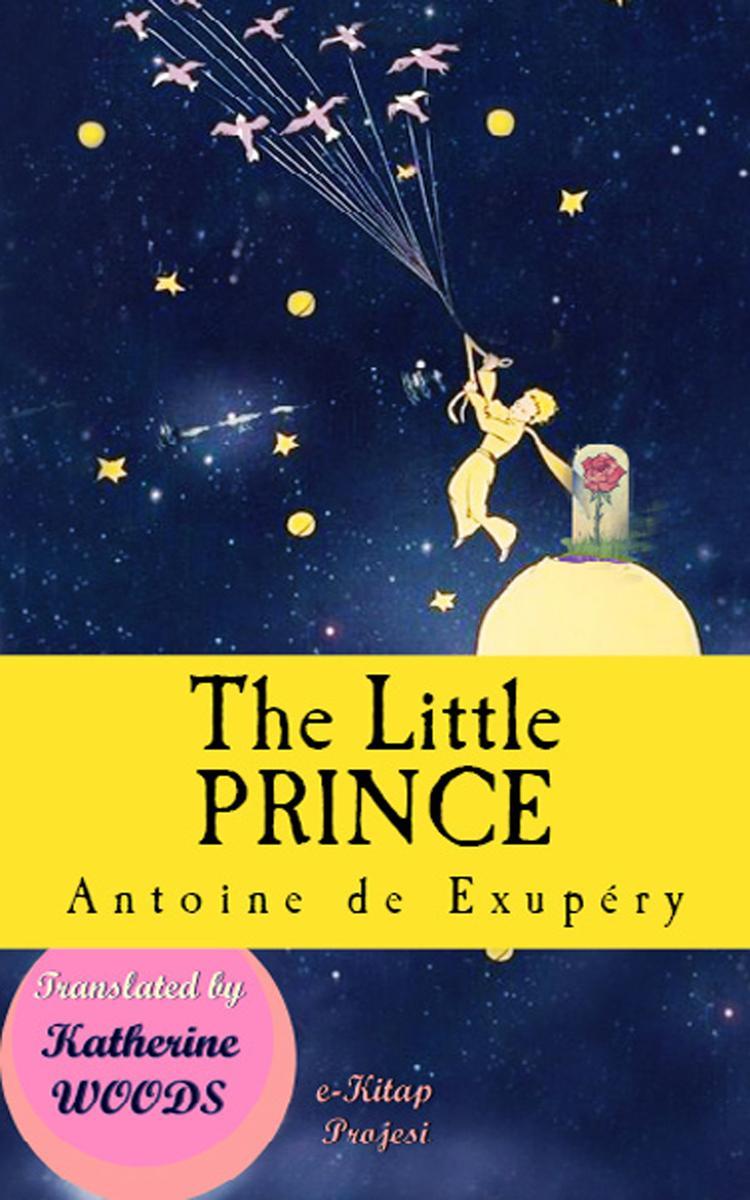
The Little Prince Illustrated Edition
¥18.74
The Little Prince [Le Petit Prince], is a novella and the most famous work of the French aristocrat, writer, poet and pioneering aviator Antoine de Saint-Exupéry (1900–1944). The novella is both the most-read and most-translated book in the French language, and was voted the best book of the 20th century in France. After the outbreak of the Second World War Saint-Exupéry became exiled in North America. In the midst of personal upheavals and failing health, he produced almost half of the writings for which he would be remembered, including a tender tale of loneliness, friendship, love and loss, in the form of a young prince fallen to Earth. An earlier memoir by the author had recounted his aviation experiences in the Sahara Desert, and he is thought to have drawn on those same experiences in The Little Prince. Since its first publication in the United States, the novella has been adapted to numerous art forms and media, including audio recordings, radio plays, live stage, film screen, television, ballet, and operatic works. ? ?The Little Prince is a poetic tale, with watercolour illustrations by the author, in which a pilot stranded in the desert meets a young prince fallen to Earth from a tiny asteroid. The story is philosophical and includes social criticism, remarking on the strangeness of the adult world. It was written during a period when Saint-Exupéry fled to North America subsequent to the Fall of France during the Second World War, witnessed first hand by the author and captured in his memoir Flight to Arras. The adult fable, according to one review, is actually "...an allegory of Saint-Exupéry's own life--his search for childhood certainties and interior peace, his mysticism, his belief in human courage and brotherhood.... but also an allusion to the tortured nature of their relationship." ? ?Though ostensibly styled as a children's book, The Little Prince makes several observations about life and human nature. For example, Saint-Exupéry tells of a fox meeting the young prince during his travels on Earth. The story's essence is contained in the lines uttered by the fox to the little prince: On ne voit bien qu'avec le c?ur. L'essentiel est invisible pour les yeux. ("One sees clearly only with the heart. What is essential is invisible to the eyes.") Other key thematic messages are articulated by the fox, such as: Tu deviens responsable pour toujours de ce que tu as apprivoisé. ("You become responsible, forever, for what you have tamed.") and C'est le temps que tu as perdu pour ta rose qui fait ta rose si importante. ("It is the time you have lost for your rose that makes your rose so important.") The fox's messages are arguably the book's most famous quotations because they deal with human relationships. ABOUT AUTHOR: Antoine de Saint-Exupéry, officially Antoine Marie Jean-Baptiste Roger, comte de Saint Exupéry (29 June 1900 – 31 July 1944) was a French aristocrat, writer, poet, and pioneering aviator. He became a laureate of several of France's highest literary awards and also won the U.S. National Book Award. He is best remembered for his novella The Little Prince (Le Petit Prince) and for his lyrical aviation writings, including Wind, Sand and Stars and Night Flight Saint-Exupéry was a successful commercial pilot before World War II, working airmail routes in Europe, Africa and South America. At the outbreak of war, he joined the French Air Force (Armée de l'Air), flying reconnaissance missions until France's armistice with Germany in 1940. After being demobilised from the French Air Force, he travelled to the United States to persuade its government to enter the war against Nazi Germany. Following a 27-month hiatus in North America, during which he wrote three of his most important works, he joined the Free French Air Force in North Africa, although he was far past the maximum age for such pilots and in declining health. He disappeared over the Mediterranean on his last assigned reconnaissance mission in July 1944, and is believed to have died at that time.

How To Make A Living With Your Writing With Books, Blogging and More Books, Blog
¥53.06
Would you like to make a living with your writing? This book will show you how. I spent 13 years working as a cubicle slave in the corporate world. I was miserable in my job and my creativity was stunted by the crushing daily grind. Then I started writing books and blogging, using my words to create products and attract readers. In September 2011, I left my corporate job to become a full-time author and creative entrepreneur and since then I've grown my business year on year, all based on my writing. More importantly, I'm finally living the happy life I always wanted. I'm not a Kindle or blogging millionaire and this is not a get rich quick scheme. But I will share with you how I make a multi-six-figure income from writing books, blogging and marketing in an ethical manner. We're living in the best time ever to make a living with your writing! Read on to learn more. The book includes the following Table of Contents: Overview of how I make a living and income split First principles Tips on writing and productivity Tips on mindset Part 1: How to make money from books It's not just one book Your publishing options: Traditional publishing Changes in the publishing industry Your publishing options: Becoming an indie author How to self-publish an ebook How to self-publish a print book How to self-publish an audiobook Part 2: How to make money online in other ways A business powered by content marketing Product sales Affiliate income Consulting or coaching Professional speaking Advertising and sponsorship Freelance writing Tips for content marketing The transition and your next steps Plus/ Companion Workbook so you can answer the questions in the book for yourself. If you'd like to make a living with your writing, click to sample or buy now.
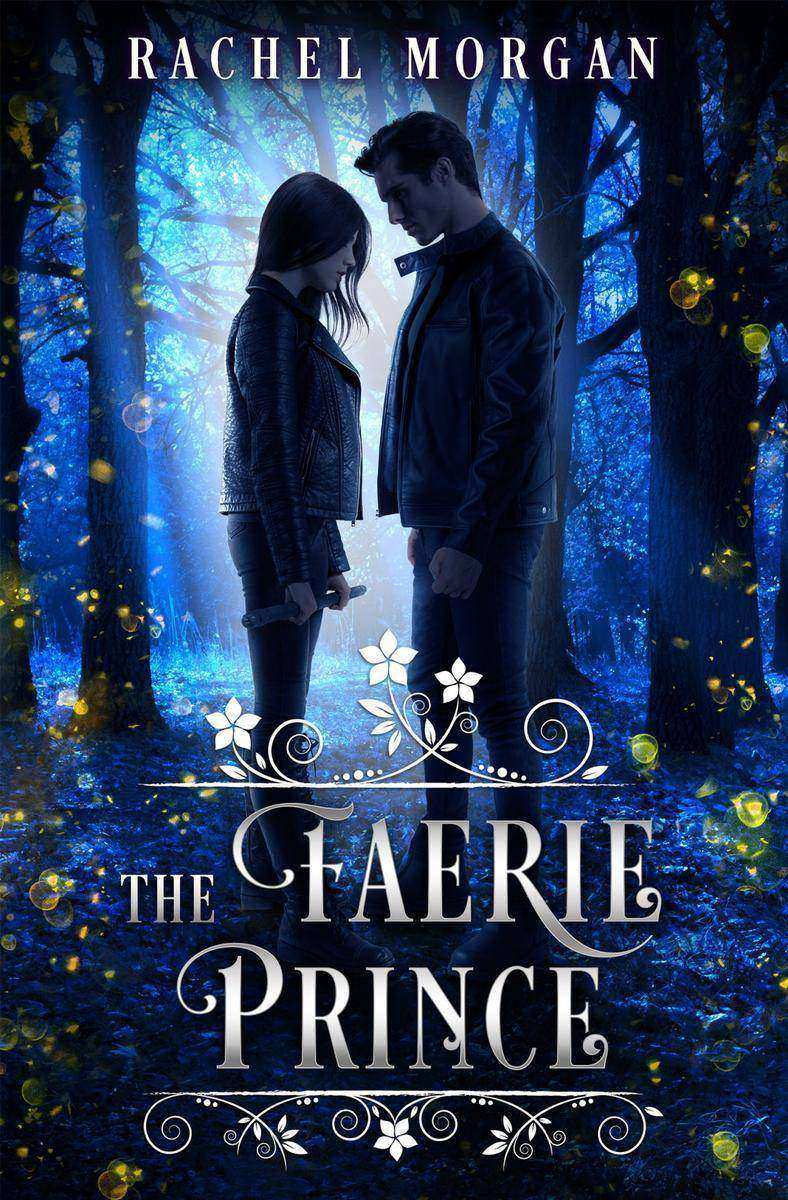
The Faerie Prince
¥38.07
Action, intrigue, and romance to swoon for! With graduation just weeks away, guardian trainee Violet Fairdale is determined to claim the top spot in her class. But first, she’ll have to survive her final assignment—and the guy she’s been forced to partner with. Her confusing feelings for Ryn aren’t the only thing making life difficult, though.?With enchanted storms wreaking havoc in the fae realm, a murder within the Guild, and an Unseelie prince still determined to possess Vi’s special magic, graduation is about to become the least of her problems. Perfect for fans of The Mortal Instruments, The Iron Fey, and Graceling.

Povestea fetitei pierdute
¥81.67
Una dintre cele mai mari romanciere contemporane" -The New York Times Book Review Odat cu acest ultim volum remarcabil alTetralogiei Napolitane, Elena Ferrante transform povestea despre Lila i Elena ntr-o epopee extraordinar care se ntinde de-a lungul a ase decenii i se constituie ntr-un portret al unui cartier, al unui ora n tranziie i al unei ri ce-i croiete drum cu greu prin prima jumtate a secolului XX. -The New York Times nPovestea fetiei pierdute, Elena Lila au ajuns acum la vrsta maturitii; amndou au avut parte att de mpliniri, ct i de eecuri. Dincolo de toate, prietenia lor a rmas punctul n jurul cruia le graviteaz vieile.Au luptat s scape de cartierul srccios din Napoli n care au crescut. Elena s-a cstorit, s-a mutat la Florena i a publicat cteva cri bine primite. n acest ultim volum al tetralogiei, asistnd neputincioas la disoluia lumii pe care i-a creat-o, decide s se ntoarc la Napoli. Lila, de pe alt parte, n-a reuit niciodat s se ndeprteze de oraul copilriei. A nceput o afacere de succes, dar asta a adus-o mai aproape de conflictele violente din snul comunitii mcinate de ur, ovinism i agresivitate.Cele dou eroine se atrag, se resping, se influeneaz reciproc, se ndeprteaz i apoi se regsesc, se invidiaz i se admir la nesfrit. Viaa le supune la noi provocri, dar Lila i Elena descoper, fiecare n ea nsi, dar i n cealalt, fora necesar pentru a merge mai departe.Pe fundalul unui Napoli pe ct de seductor, pe att de periculos i al unei lumi aflate ntr-o transformare radical, povestea prieteniei de o via dintre cele dou protagoniste este spus cu un talent i o sinceritate inegalabile. Cele patru volume constituie o saga impresionant la care simi nevoia s te ntorci i care i aduce noi revelaii de fiecare dat.Acest remarcabil ultim volum confirm faptul cTetralogia Napolitaneste capodopera Elenei Ferrante. -Publishers Weekly RomaneleTetralogiei Napolitanesunt construite pe mai multe planuri, iar Ferrante mbin perfect felul de a povesti cu efectele stilistice cu totul speciale. -The Independent Elena Ferrante este pseudonimul unei romanciere italiene. A publicat ase cri, printre careL’amore molesto (dup care Mario Martone a fcut un film omonim) iZilele regsirii mele, descris ca rvitoare" deNew York Timesi ecranizat de Roberto Faenza.La Pandora M au aprut primele dou romane ale Tetralogiei Napolitane:Prietena mea genialiPovestea noului nume.Toat lumea ar trebui s citeasc orice poart semntura Elenei Ferrante.The Boston GlobePersonajele feminine ale Elenei Ferrante sunt autentice opere de art.El País

M?na c??tig?toare
¥7.36
SERIA ?FAMILIA MACGREGOR“La dou?zeci ?i patru de ani, Darcy Wallace simte c? via?a nu-i mai poate oferi nimic: i-ar pl?cea o carier? de scriitoare, dar se plafoneaz? ca bibliotecar? ?ntr-un or??el din Kansas; ?i-ar dori o aventur? sentimental? ca-n pove?ti, dar abia reu?e?te s? scape de b?rbatul rigid, f?r? sim?ul umorului, cu care este logodit?; viseaz? la o ma?in? sport, dar are parte de o rabl? care se stric? atunci c?nd se a?teapt? mai pu?in. Dintr-un impuls de moment, hot?r??te s?-?i caute norocul la Vegas... unde, miz?ndu-?i ultimii dolari, are parte de o surpriz? de propor?ii – c??tig? aproape dou? milioane de dolari. Brusc, t?n?ra venit? dintr-un mic or??el devine o celebritate – ?i are nevoie de protec?ie.Dar banii aduc fericirea? Este posibil, ?n cazul lui Darcy, mai ales c? Robert MacGregor Blade, directorul cazinoului, este dornic s-o ?ndrume prin lumea str?lucitoare, dar plin? de pericole a Vegasului. Rela?ia lor, la ?nceput strict profesional?, alunec? ?n scurt timp pe o pant? romantic?. Darcy ?tie ce-?i dore?te: o ?ans? cu Robert. Va reu?i ?ns? de data asta s?-?i gestioneze corect ocazia nesperat??
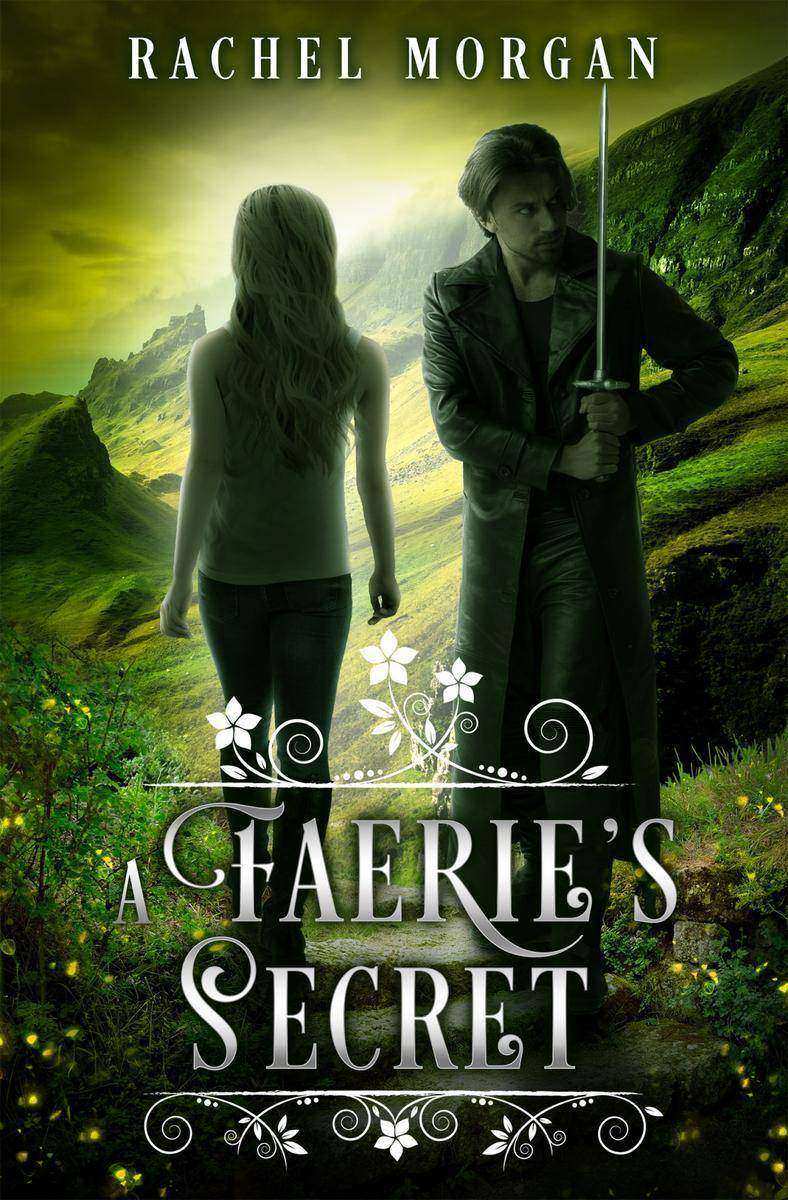
A Faerie's Secret
¥32.62
Join beloved characters and new heroes as the bestselling Creepy Hollow series continues ten years after the events of The Faerie War! Calla Larkenwood wants nothing more than to be a guardian, but her overprotective mother has never allowed it. Battling fae creatures is too dangerous a job for a young girl, and there’s that pesky magical ability she needs to keep hidden from the Guild. How can she do that if she’s working right under their nose? When circumstances change and Calla finally gets to follow her dream, she discovers guardian trainee life isn’t all she hoped it would be. Her classmates are distant, her mentor hates her, and keeping her ability a secret is harder than she thought. Then an Underground initiation game goes wrong, landing Calla with a new magical ability she can’t control. She needs help—and the only way to get it is by bargaining with the guy who just discovered her biggest secret. Perfect for fans of The Mortal Instruments, The Iron Fey, and Graceling.

Ketogenic Cookbook:Quick And Easy Ketogenic Diet Recipes For Fasting
¥0.01
Be Happier and Healthier Starting Today! Are You Tired of Feeling Out Of Shape? Want to Start A Diet That Will Allow You to Change Your Life Forever? This Ketogenic Cookbook: Quick And Easy Ketogenic Diet Recipes you can easily prepare is an excellent guide to those who want to lose weight and get slim over the small period of time. In today’s world where one’s figure is the first thing that represents him or her, one should take care extra care of it not only because of the impression that it leaves on others but also because of the sake of having healthy and quality wiseexcellent life. We will get into detail in the book but for now take a general look on what this book offers: Ketogenic diet and its unlimited benefits Ketogenic diet recipes: For the breakfast Ketogenic diet recipes: For the lunch time Ketogenic diet recipes: For dinner Get the jumpstart to a newer you and a better life by grabbing this book.

Just GONE:Book 1 of 2 of the 7 Years Later Series
¥0.01
It was without doubt that Lana Bell was the cleverest, sexiest, most inspiring and seductive girl Hayden Ravensdale had ever met. The attractive law student had burst into his life, blown his mind and changed everything. He was head over heels in love with her. He could not have foreseen the disaster awaiting him just around the corner. So when all of a sudden Lana disappears without a trace, Hayden’s whole world crumbles to pieces. Had it all been a lie? Had she only been using the young and wealthy heir to a well-known international publishing firm? When after 7 years of despair, pain, anger, hatred, and finally, emptiness, the disillusioned businessman unexpectedly comes face to face with the love of his youth, only to see his strictly organized life turn upside down again. Their chance encounter finds them both cast into a whirlwind of attraction, uncertainty, and doubt. Can he ever trust her again? Can he once more put his broken heart into the hands of this woman without the risk of ruining himself completely? Dare he even resist? Can either of them possibly deny the physical attraction they feel towards each other? This is the passionate and captivating love story of Hayden and Lana. I hope you will enjoy reading it!
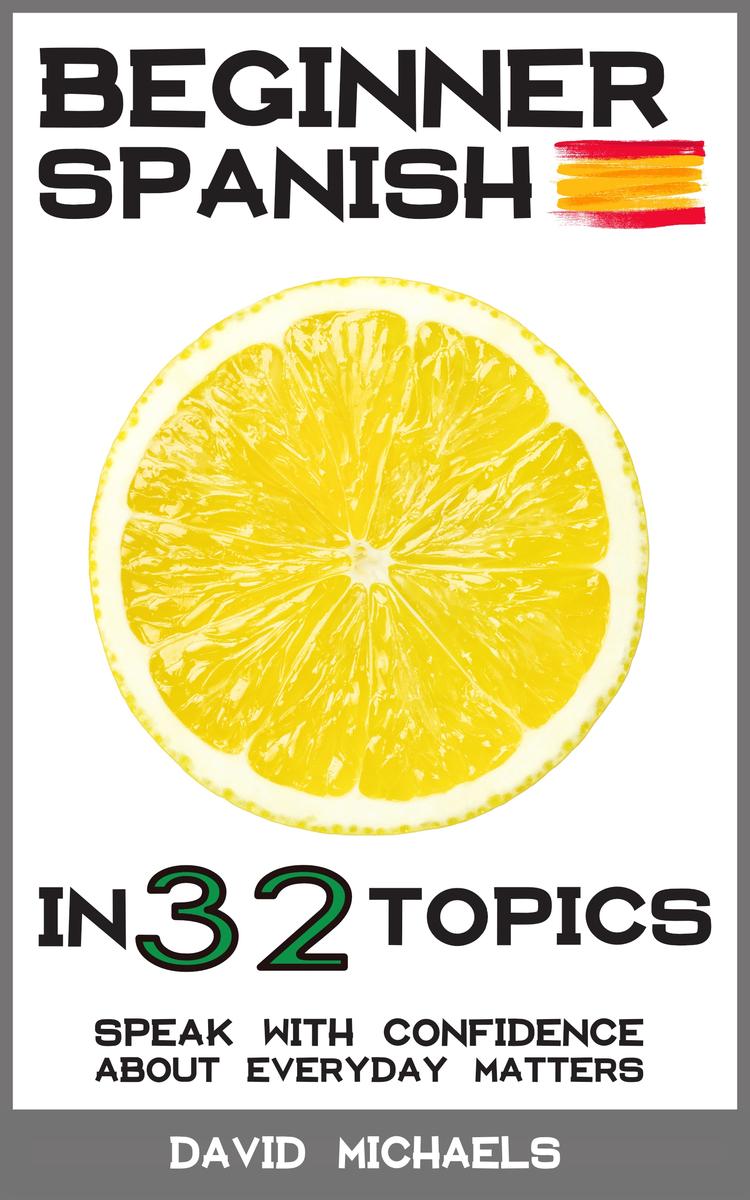
Beginner Spanish in 32 Topics:Speak With Confidence About Everyday Matters
¥0.01
Learn to speak in Spanish about the things that matter to you. Massively improve your Spanish vocabulary and speaking skills through reading about these 32 everyday topics. By the end of this book you will: Know the essential Spanish vocabulary for speaking about 32 everyday topics. Feel confident having real conversations about real topics with other Spanish speakers. Know 100’s of new Spanish words and feel comfortable about moving up to the intermediate level. Who is it for? If you are a high beginner with a good understanding of basic grammar and vocabulary then this is the book to help you to take your Spanish to the next level. How does it work? Each article covers a topic that you would commonly talk about in your own language. So instead of learning boring vocabulary lists, you will be reading interesting articles and learning the specific language you will need for having real conversations with other Spanish speakers. We’ve kept it interesting by giving each topic an ‘angle’. So, for example the ‘romance’ article is about ‘online dating’ and the ‘food’ article is about ‘cooking shows’ etc. This way, you will be much more engaged and learn more smoothly. By the end of this book you will: Know the essential Spanish vocabulary for speaking about 32 everyday topics. Feel confident having real conversations about real topics with other Spanish speakers. Know 100’s of new Spanish words and feel comfortable about moving up to the intermediate level. Get started today and click the buy button, and start speaking with confidence about 32 everyday topics.

Textos para ler antes de morrer de rir
¥8.18
Agora você tem uma cole??o dos textos mais engra?ados e legais do planeta! Onde quer que você esteja, este livro irá lhe arrancar boas gargalhadas. Less ATEN??O: Se você n?o ler estes textos antes de morrer, depois n?o irá ler nunca mais... Pense bem nisso.

Becoming Resilient – The Definitive Guide to ISO 22301 Implementation
¥326.92
Author and experienced business continuity consultant Dejan Kosutic has written Becoming Resilient with one goal in mind: to give you the knowledge and practical step-by-step processes you need to successfully implement ISO 22301—without any stress, hassle or headaches. This book is written for beginners in the field and is structured in such a way that someone with no prior experience or knowledge about business continuity. It will help you fully understand the subject and implement an entire business continuity project. If you are an IT administrator, information security professional, quality manager, or a project manager with a task to implement ISO 22301 in your company, this book is perfect for you. However, this book will be also useful for consultants and experienced business continuity practitioners. It can be used as a checklist for getting a comprehensive and structured view of how business continuity should be implemented. Becoming Resilient is a step-by-step guide that takes you from an introduction of ISO 22301 to the implementation of the business continuity standard. During the process, Dejan uses plain English to explain: Common misunderstandings of the standard: “Business continuity is a job for IT guys;” “Business continuity equals business continuity plans;” “Business continuity is a one-time job;” and others.How to present the benefits to your top management:“Reason number one for business continuity project failures? The number one problem most business continuity practitioners are emphasizing? The answer is the same – lack of management understanding and commitment.”How to develop a Business Impact Analysis Methodology, an Incident Response Plan, a Business Recovery plan and other crucial actions to implement and maintain the ISO 22301 standard. Leaving the technical jargon to the geeks, Becoming Resilient is written for everyone, using plain, simple language. Whether you’re a business continuity practitioner or new to the field, it’s the only book you’ll ever need on the subject of ISO 22301 implementation.

Nop?ile aman?ilor
¥53.33
Continuarea romanului bdquo Zilele aman?ilor ldquo;. bdquo Aman?ii Corinei Ozon, atacirct Zilele, cacirct ?i Nop?ile lor, sunt deja mai mult decacirct simple c?r?i, sunt un fenomen: peste tot se vorbe?te despre ei, ?i sim?i imediat c? trebuie s?-i cuno?ti ?i tu. ?i, dac? o faci, sigur nu regre?i dup?: Corina te conduce cu un stil inconfundabil icircn lumea lui Mircea ?i Cati, unde vei racircde, vei a?tepta cu sufletul la gur? urm?toarea aventur?, vei pica pe gacircnduri, vei reflecta la propria ta poveste de dragoste. Cu o scriitur? bine ?lefuit?, Corina Ozon din Nop?ile aman?ilor apas? ?i mai tare pedala fa?? de romanul ei de debut. Se cite?te repede, e savuroas?, memorabil? ?i, inevitabil, te face s? vrei mai mult! (Cristina Nemerovschi) bdquo Scriitura Corinei Ozon reu?e?te un lucru cu adev?rat dificil. S? abordeze icircntr-o manier? lejer? un subiect aparent frivol ?i s? dea icirc;n acela?i timp impresia de seriozitate ?i profunzime. De fapt, textele Corinei nu sunt frivole, dar relev?, icirc;n maniera unui Milan Kundera, de exemplu, superficialitatea ca structur? a lumii ?i, icircn special, a lumii oamenilor moderni, care iubesc pe fug?, colorat, zgomotos ?i la limita inconsisten?ei. Literatura aceasta se cite?te cu pl?cere ?i cu anxietate pentru c? ne reg?sim total icircn ea, pentru c? placircngem ?i racircdem icircn ea, pentru c? ne privim ca icircntr-o oglind?. Iar racircsul, iar??i icircn cheia lui Kundera, survine eliberator din contemplarea zadarnicelor ?i ve?nicelor chinuri ale dragostei, puse iar ?i iar icircn acelea?i laquoridicole iubiri raquo.(Doru C?st?ian)

Map of Shadows
¥40.79
A map of skin etched in blood. A world under threat from the Borderlands. A young woman who must risk the shadows to save her family. When her Grandfather is murdered under mysterious circumstances, Sienna Farren inherits his map shop in the ancient city of Bath, England. Once there, she discovers that her family is bound up with the Ministry of Maps, a mysterious agency who maintain the borders between this world and the Uncharted. With the help of Mila Wendell, a traveller on the canals, Sienna discovers her own magical ability and a terrifying place of blood that awaits in the world beyond. But when she discovers a truth about her past and the Borderlands begin to push through the defences, Sienna must join the team of Mapwalkers on their mission to find the Map of Shadows – whatever the cost. In a place written out of history, a world off the edge of the map, Sienna must risk everything to find her father … and her true path as a Mapwalker. This dark fantasy novel is the first in the new Mapwalker series. Download a sample or buy now!

Alkaline Diet Cookbook:Delicious Alkaline Diet Recipes To Kick-Start Your Weight
¥0.01
This book not only provides step-by-step dieting information but also endless meal recipes that you need. Are you ready to lose weight and reclaim your health? If you want to follow Acid Alkaline Diet, you should focus on your regular eating habits. Alkaline diet has lots of benefits, and The Alkaline Diet Cookbook will help you to manage the pH level of your body. In this book, you will find about delicious recipes. These recipes are given with complete instructions, and your work will be easy. This book has 25 delicious recipes with images and easy instructions. You can try any recipe without any trouble and get desired benefits. You can reduce weight, chances of cancer and decrease chances of various health problems. This book can be a quick guide for you so download this book and follow its recipes. You have to use fresh ingredients to get maximum advantage of recipes of this book. Every recipe is carefully planned to improve your health and protect your body from toxic elements. This book offers: * Alkaline Breakfast Recipes * Alkaline Lunch Recipes * Alkaline Dinner Recipes * Alkaline Snacks for Evening Tea * Alkaline Dessert Recipes You Will Learn The Following: What is An Alkaline Diet? What is PH? Benefits of an alkaline diet Examples of Acidic, Alkaline and Neutral Foods Alkaline foods to eat and those to avoid Installing Apps and backing up with SD card Breakfast Recipes Lunch Recipes Dinner Recipes And much more! Download this book and learn about Alkaline Food List and healthy recipes for everyone. You can prepare healthy and filling meals for your family members. Get your copy today! You'll be surprised to see how easy it is to stay healthy, feel energized, and keep on track!
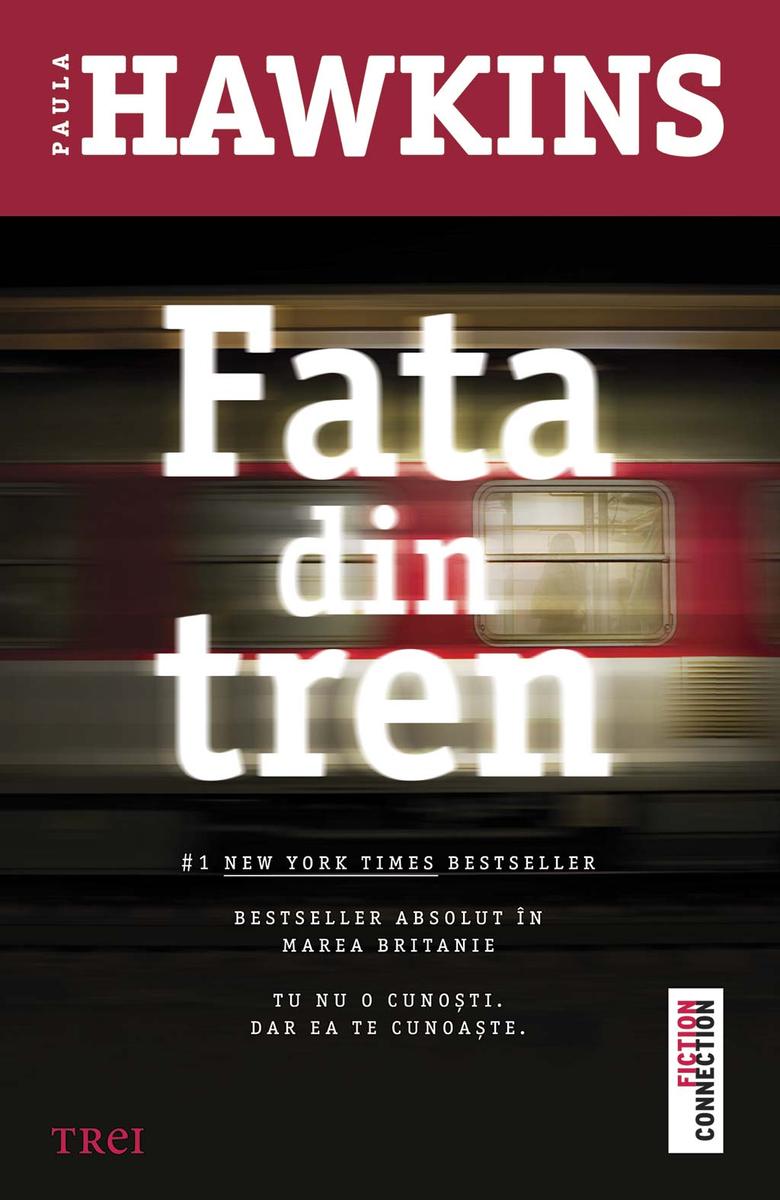
Fata din tren
¥73.49
#1 New York Times BestsellerBestseller absolut icircn Marea BritanieTu nu o cuno?ti.Dar ea te cunoa?te.Peste 1,8 milioane de exemplare vacircndute icircn doar patru luni, icircn Statele Unite. Rachel merge icircn fiecare diminea?? cu acela?i tren. ?tie c? va a?tepta la acela?i semnal defect, timp icircn care va urm?ri ritualul de diminea?? al unui cuplu ce locuie?te icircntr-o cas? de lacircng? calea ferat?. I-a botezat bdquo Jess ?i Jason; ?i via?a lor i se pare perfect?. Pacircn? cacircnd icircntr-o zi vede ceva ce o ?ocheaz?. Totul se schimb? ?i Rachel are ?ansa de a lua parte la vie?ile pe care le-a observat doar de pe margine. Misterios ?i pasionant Fata din tren este un thriller de prim? macircn?, care te face dependent de viciul cititului. S.J. Watson, autorul bestsellerului Icircnainte s? adorm. Fata din tren este un roman de suspans remarcabil. M-a ?inut treaz o noapte icircntreag?. Stephen King Cu siguran?? va atrage nenum?ra?i fani ndash; The New York Times Precum trenul care o poart? pe Rachel icirc;n fiecare zi, povestea ?erpuie?te printre vie?ile anoste din suburbiile Londrei, iar cititorii o vor urm?ri cu sufletul la gur?. The Boston Globe Dac? ?i-a pl?cut Fata disp?rut?, vei devora acest thriller psihologic: icirc?i va schimba pentru totdeauna felul icircn care prive?ti vie?ile celorlal?i. People Dac? nu e niciun tren care s? mearg? icircn sensul opus ?i dac? mergem suficient de icircncet, cacircteodat? pot s?-i z?resc, pentru o clip?, pe terasa casei lor. Dac? nu, a?a cum se icircnt acircmpl? azi, mi-i icircnchipui. Jess ?ade cu picioarele ridicate pe masa de pe teras?, cu un pahar de vin icircn macircn?, Jason e icircn spatele s?u, cu macircinile pe umerii ei. Icircmi imaginez atingerea macirc inilor lui, greutatea lor, senza?ia de siguran?? ?i confort. Uneori m? surprind icircncerc acircnd s?-mi amintesc cacircnd am avut parte ultima dat? de atingerea real? a unei persoane, de o icircmbr??i?are din tot sufletul sau de o stracircngere de macircn?, ?i simt cum mi se fracircnge inima.

Bebidas naturais para a sua saúde:34 sucos frescos & smoothies
¥9.16
Um suco fresco natural o um smoothie para a sua saúde? Gostaria de saber como usar frutas e legumes para fazer sucos frescos e melhorar sua saúde? A vida também é feita de prazeres simples que podem se transformar com facilidade em pura felicidade Nossa cole??o de guias práticos ? eGuide Nature ? vai provar isso para você! Desejamos compartilhar o nosso conhecimento e as nossas dicas úteis para simplesmente ? domesticar ? a natureza da qual a vida moderna às vezes nos afasta… N°0 - Bebidas naturais para a sua saúde O que você vai encontrar neste ? eGuide Nature ?? Nossas dicas para preparar seus sucos frescos & smoothies curativos Propriedades curativas de frutas e legumes 84?receitas de sucos e smoothies Ent?o, você está pronto(a) para trazer a natureza em sua vida? Vamos! Sinceramente, Cristina & Olivier Rebiere

Amintiri din copil?rie. Pove?ti, povestiri, nuvele
¥0.01
“Dragi mi-erau tata ?i mama, fra?ii ?i surorile ?i b?ie?ii satului, tovar??ii mei de copil?rie, cu cari, iarna, ?n zilele geroase, m? desf?tam pe ghea?? ?i la s?niu?, iar vara ?n zile frumoase de s?rb?tori, c?nt?nd ?i chiuind, cutreieram dumbr?vile ?i luncile umbroase, ?arinele cu holdele, c?mpul cu florile ?i m?ndrele dealuri, de dup? care ?mi z?mbeau zorile, ?n zburdalnica v?rst? a tinere?ii! Asemenea, dragi mi-erau ?ez?torile, cl?cile, horile ?i toate petrecerile din sat, la care luam parte cu cea mai mare ?nsufle?ire.
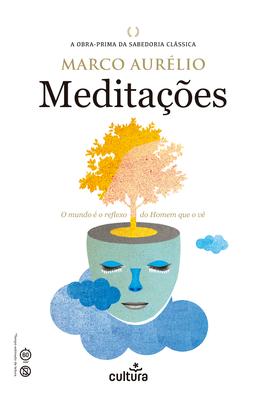
Medita??es
¥79.35
Enquanto imperador, sou importante em Roma; enquanto homem, sou igual a qualquer um no mundo. Marco Aurélio Meditaes é a única obra de Marco Aurélio que chegou até nós. Composta por doze livros, em forma de máximas, apresenta reflexes marcadas pelo Estoicismo. Marco Aurélio considerava-se um cidado do mundo — ou melhor, do Universo. Para ele, a igualdade e a fraternidade entre os homens obrigavam a uma ateno constante aos atos sociais, a nunca censurar os deuses nem os seres humanos e a aceitar os acontecimentos como a expresso simples da lei do Universo. Esta obra é o livro de um homem de ao, que procura a serenidade, indispensável à eficácia, mas também de um homem para o qual os atos humanos apenas possuem um valor profundo e duradouro se se enquadrarem na perspetiva do Todo do Universo e da comunidade de todos. Muito mais do que uma compilao de pensamentos filosóficos, Meditaes é um manual de comportamento perfeitamente atual, que apela à reflexo sobre como podemos melhorar o nosso modo de vida e o nosso relacionamento com os outros.
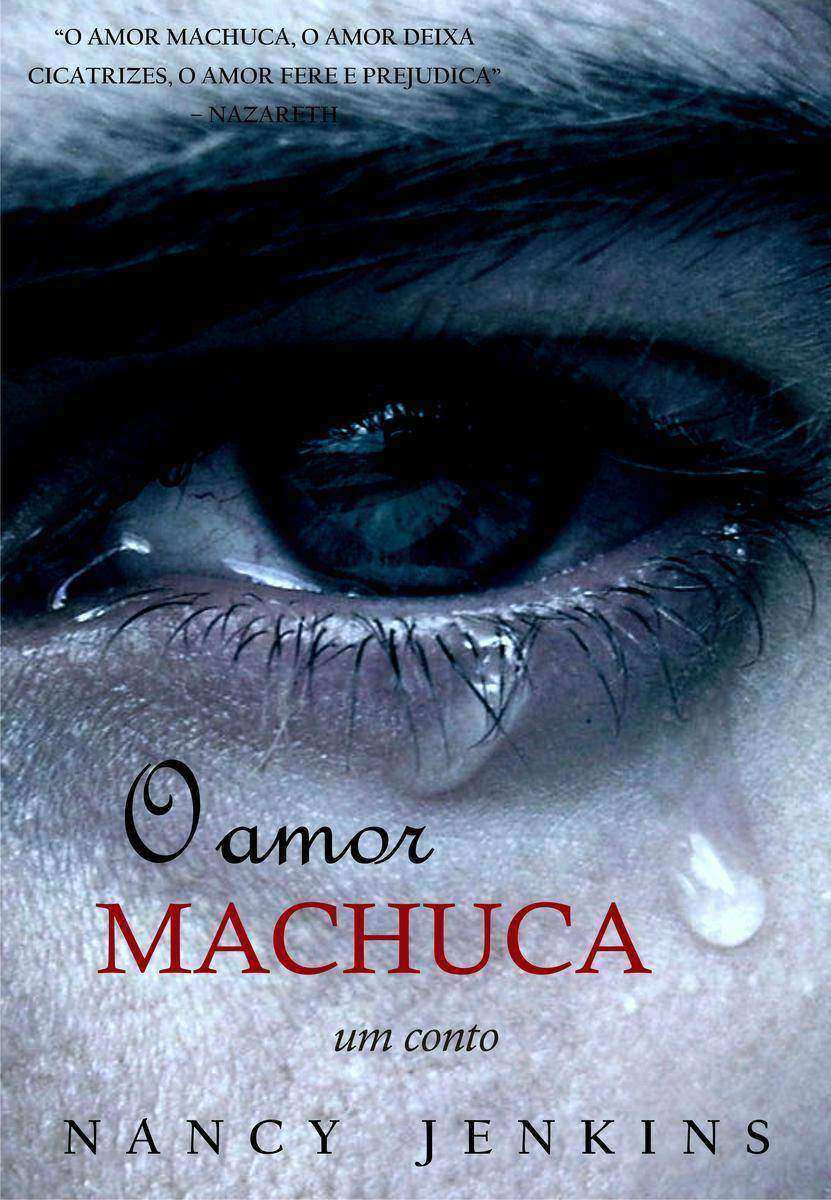
O amor machuca
¥8.18
“O amor machuca, o amor deixa cicatrizes, o amor fere e prejudica” – Nazareth Como qualquer outro apaixonado, Kevin só queria viver uma grande paix?o com sua amada, Helen Lewis, a garota mais bonita da rua. Porém, como muitos apaixonados, Kevin acabou se machucando...

Investing In Stock Market For Beginners:understanding the basics of how to make
¥24.44
Stock investing can be intimidating and a bewildering experience for complete beginners. Fortunately that doesn't have to be the case anymore. This course will arm you with all the basics and fundamentals of stock market picking, so you can begin taking control of your financial future! This book will take away the confusion and teach the must-know principles and theories in plain english.This book is especially written for those who know very little, if any about the stock market and how it works.Be aware that although you can make a LOT of money in the market? Many also go broke without proper guidance and training. For a beginner, this is the perfect book to get you started. Perhaps not with real money yet? I urge you to get your feet wet first, gain some experience (by applying the principles in this book) and when you're making a killing in the market simulations? You can now invest real cash!If you don't want to go through that stage first? Don't worry. Safe investments will be taught to you to mitigate high risk ventures, so you can get started with minimal risks.
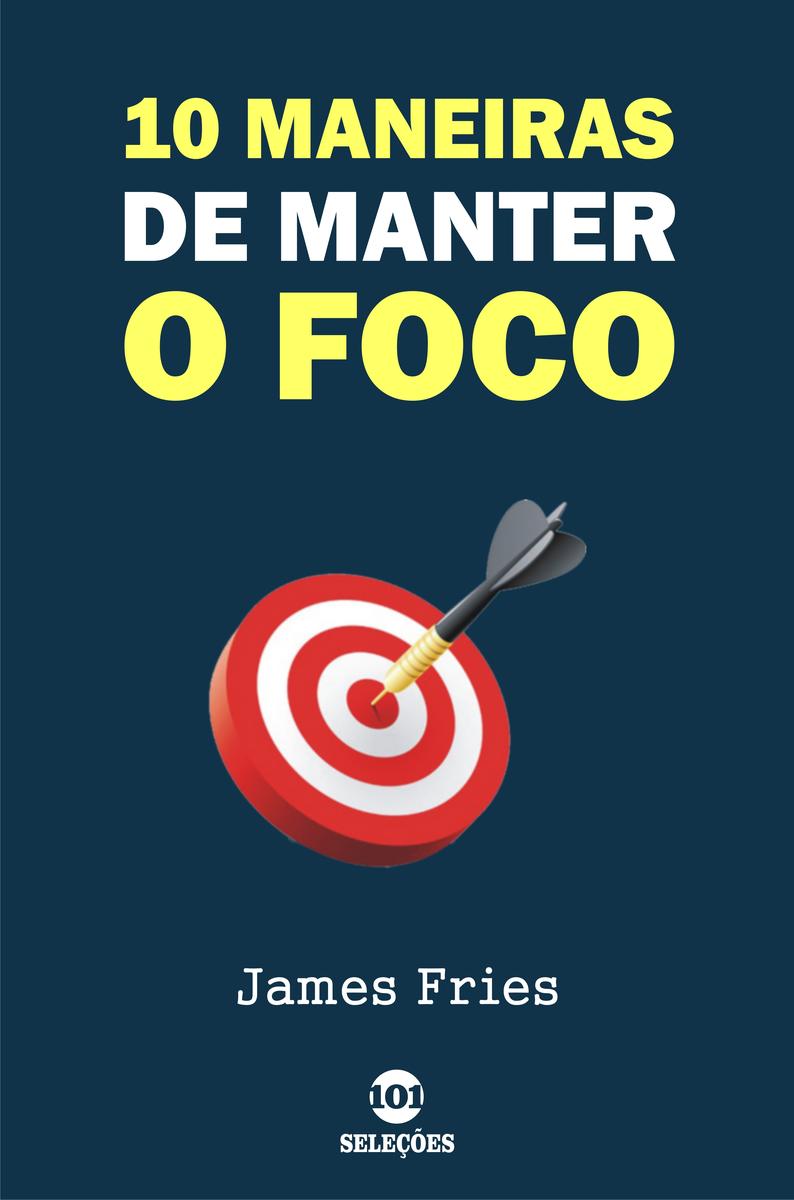
10 Maneiras de manter o foco
¥8.18
Deseja alcan?ar suas metas e obter sucesso no trabalho e na vida?Ent?o mantenha o foco. Concentre-se. Fa?a uma coisa de cada vez!Aprenda 10 maneiras de manter o foco e aumentar a sua produtividade.




 购物车
购物车 个人中心
个人中心



